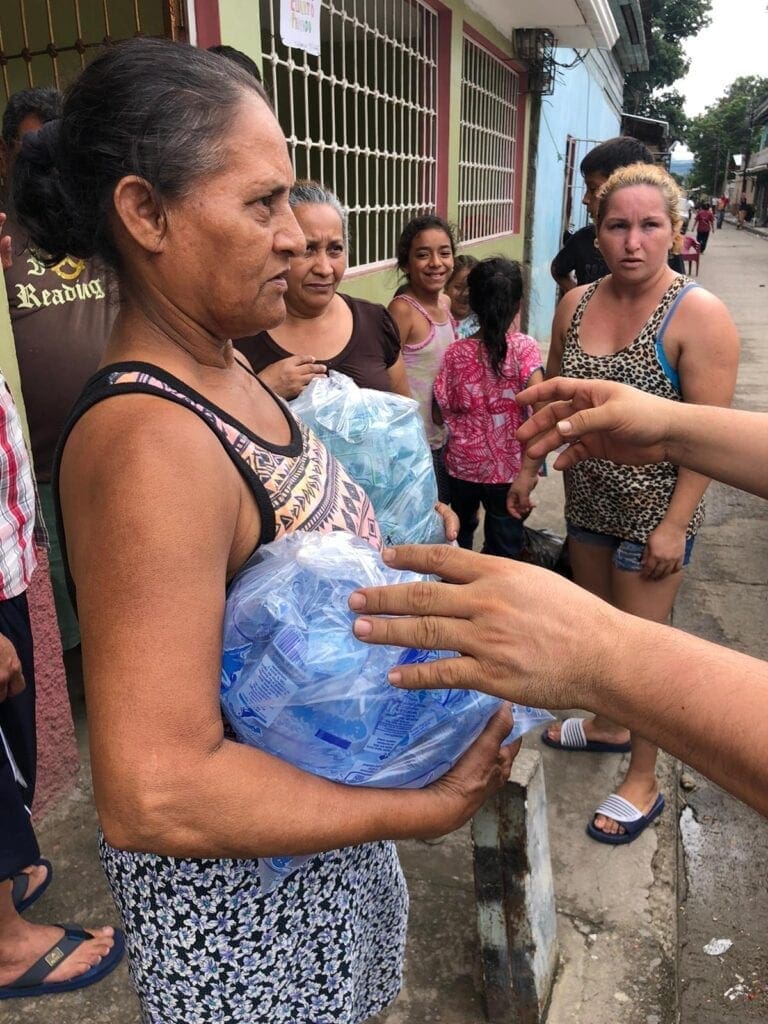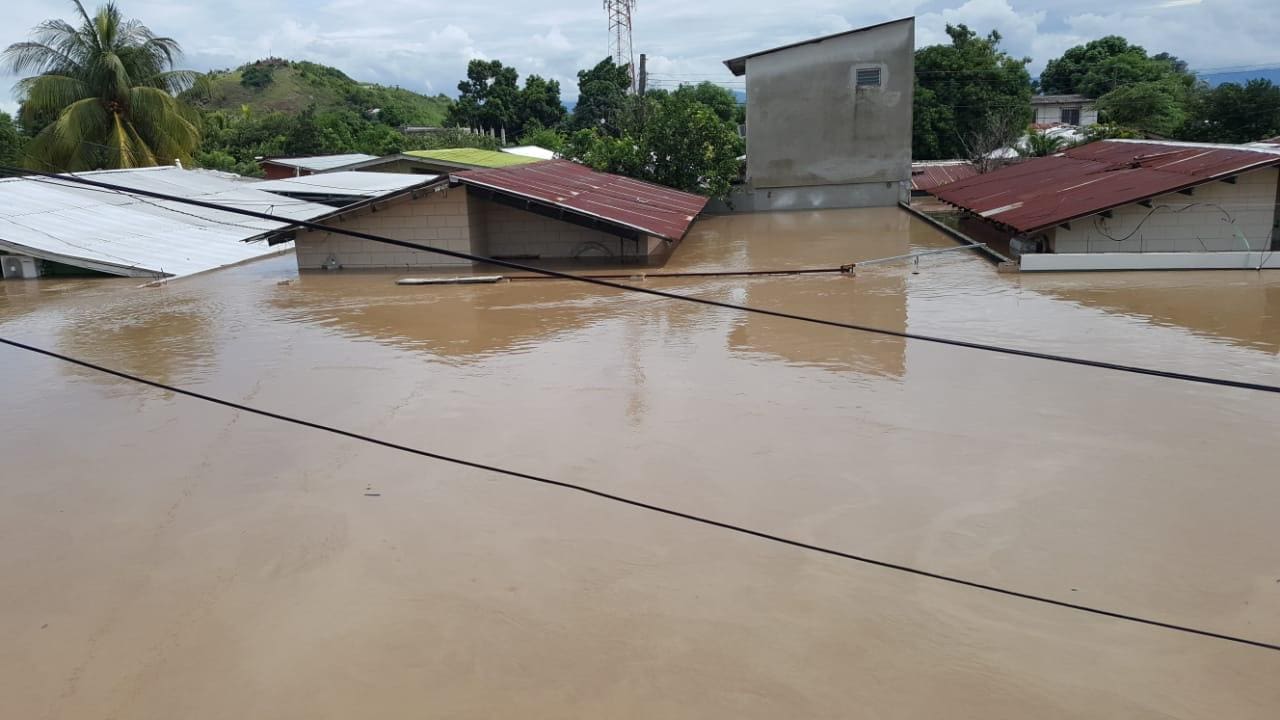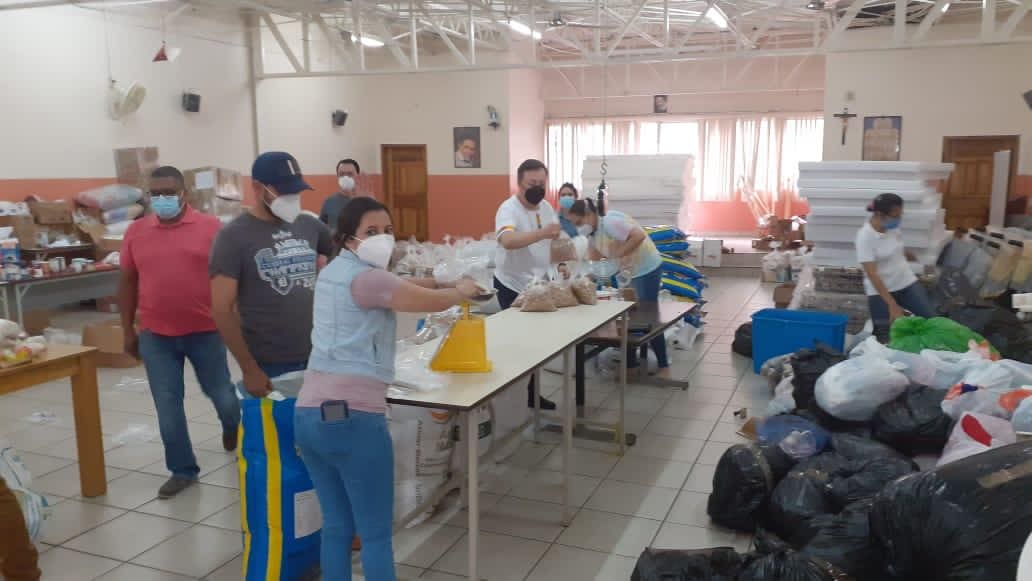“A GREAT WAVE OF SOLIDARITY HAS RISEN AMONG THE PEOPLE”
 They say that every 20 or 25 years a major hurricane hits Honduras. In 1974, it was Hurricane Fifi. In 1998, one remembers Hurricane Mitch. In 2020, it is Eta, named after the seventh letter of the Greek alphabet.
They say that every 20 or 25 years a major hurricane hits Honduras. In 1974, it was Hurricane Fifi. In 1998, one remembers Hurricane Mitch. In 2020, it is Eta, named after the seventh letter of the Greek alphabet.
Eta is the strongest of the 2020 Atlantic Hurricane Season and the second strongest recorded in the month of November (almost outside the hurricane season). It formed as a tropical depression on 31 October. The next day it was already a tropical storm and it quickly intensified to reach hurricane strength on 2 November, becoming, in record time, category 4 (on a scale of 5). Eta made landfall in Nicaragua on 3 November with winds of 225 km/h, but by then it had already produced abundant rains in Nicaragua, Honduras, Guatemala, Panama, and part of Mexico, as the number of clouds it attracted covered an area 400 km long. Degraded to a tropical storm and then a tropical depression, it entered Honduran territory on the night of Wednesday, 4 November, and crossed Puerto Cortés late on the night of Thursday very weakened, with winds of just 40 km/h. However, all the damage was done by then. In Puerto Cortés, it rained abundantly from Sunday through Wednesday. On Monday, water already had entered some houses in La Esperanza colony, when the hurricane had not even reached Nicaraguan soil. The forecasts of “catastrophic winds” (in Nicaragua) and “catastrophic floods threatening life” (in Honduras) were far from rosy. On Wednesday, it rained torrentially and about 150 mm of rain fell in Puerto Cortés.
Already about 60 families were evacuated in the neighborhoods of La Esperanza and Nuevos Horizontes on Tuesday afternoon. On Wednesday afternoon, there were more than 400 families in Puerto and the number has not stopped growing. The latest data speak of 1427 families (7008 people) located in 68 shelters in our municipality, not counting the evacuees who are in homes of family or friends.
On Thursday, it stopped raining and the sun came out. The water that flooded some neighborhoods began to subside. Some people returned to their homes. However, we still had a surprise. The amount of rainfall that occurred in the interior of the country and in the West greatly increased the flow of the Ulúa and Chamelecón rivers. The flow of the Ulúa grew four meters more than during Mitch. On Thursday morning, we were startled by the news that the Ulúa had overflowed in Lima and the Planeta colony. The river entered the streets with all its fury, torrentially. People did not have time to leave and many were trapped on the roofs of their houses. Urgent calls went out to anyone who had boats to help in the evacuation tasks, which lasted more than two days. Entire families spent up to two days on the roofs of their houses, without drinking water or food, waiting to be rescued, with the anguish of not knowing if the water would completely flood them. Currently people are missing in these places. The next day, the river Chamelecón overflowed in Choloma, causing a similar situation, and, at night, the flood reached the sector of Baracoa, in the municipality of Puerto Cortés. Even places that had originally served as shelters were flooded and had to be evacuated. People relocated to new shelters. On Saturday, the flood reached the colonies of La Esperanza and 14 de agosto. The lagoon’s level gradually rose throughout the day and, in the afternoon, orders were given to evacuate the neighborhoods of Pueblo Nuevo, Nuevos Horizontes, and Buenos Aires by precaution. The Chamber Canal, which connects the Chamelecón River with the lagoon, was largely responsible for the increase in the lagoon’s level. The situation was critical in the sea sector, especially in Bajamar and Brisas, which were cut off and largely flooded by water. The water also entered Travesía and several families had to take refuge in the old-age center. Fortunately, in the early hours of Sunday morning, the water began to recede and we all breathed calmly after another night of tension and worry.
Rural communities also have been damaged, with the increased flow of rivers destroying some houses and roads (some villages remain cut off) and causing landslides. However, it seems that there is no need to deplore the loss of life. Crop losses have not been quantified, but are expected to be significant too. Some villages have seen their electricity cut and the supply of drinking water has been interrupted for a few days throughout the city of Puerto, although hard work is being done to restore it and some has already been restored.
The task ahead is arduous. Reconstruction will be everyone’s job. There is the destruction of infrastructure: bridges, highways, roads, power lines, water supply, wastewater collection, etc. There is much damage throughout the country. Then there are the companies and businesses, already hit by the lockdown and the COVID-19 pandemic. Large assembly plants have suffered flooding of their facilities and damage to part of the machinery. The situation of the peasants, who have lost much of their harvest, is no better. It will be necessary to support them and help them with seeds. We do not forget those who have lost their homes or who still have four walls but have lost what was inside. Families who have to start from scratch in a context in which opportunities are increasingly scarce.
At the moment, a great wave of solidarity has arisen among the people. They organize to get food and take it to the shelters, to offer clothes and mats, etc. Churches, businesses, civil organizations, firefighters, good citizens, all strive to help those who have lost everything.
What is frightening is tomorrow. We will have to be creative to help, to the extent of our strength, those hardest hit by the storm. We will need to join forces and work together.
Iván Juarros, CM







